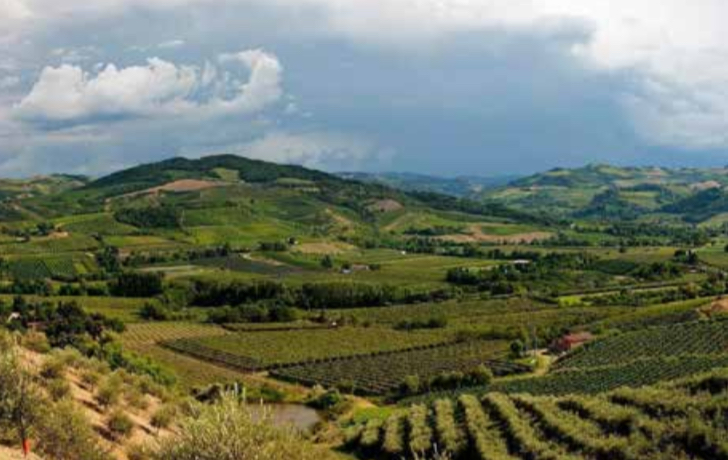Romagna wine: identity, subzones, and future
Interview with Roberto Monti, president of the consortium
The Romagna wine region continues to emerge as a complex mosaic of territories, each  with a well-defined identity, shaped by the interaction of grape variety, soil, and environment. This is a region that has grown not only in terms of quantity but, more importantly, in quality, with wines that communicate the unique characteristics of the land. Leading this transformation is Sangiovese, increasingly tied to the concept of subzones, but other native varieties are also beginning to carve out a key role for themselves.
with a well-defined identity, shaped by the interaction of grape variety, soil, and environment. This is a region that has grown not only in terms of quantity but, more importantly, in quality, with wines that communicate the unique characteristics of the land. Leading this transformation is Sangiovese, increasingly tied to the concept of subzones, but other native varieties are also beginning to carve out a key role for themselves.
According to data from the Romagna Wine Consortium, the region now boasts more than 7,000 hectares of vineyards under protection, producing approximately 15 million bottles of wine annually. In 2024, wines produced under subzone designation reached 596,000 bottles, reflecting a growing trend towards a more refined and territorial approach. We sat down with Roberto Monti, President of the Romagna Wine Consortium, to discuss the current state of the wine industry in Romagna, the focus on subzones, and what the future holds for this dynamic region.
VertdeVin: President Monti, Romagna’s wine sector is increasingly recognized as a region with diverse and distinctive terroirs. What is the current status of the subzones ?
Roberto Monti: In 2024, we saw stable production with 596,000 bottles of wine produced under subzone designations, mainly Sangiovese. What’s striking is the growing interest, not only from local producers but also from the specialized press. The subzones allow us to tell a story of the deep interaction between grape varieties and terroir, resulting in wines with unique organoleptic characteristics. This project is maturing well, and we see great potential for its development.
VdV: Alongside Sangiovese, what are the prospects for native varieties like Albana and Pagadebit ?
R.M: Albana is experiencing a very positive phase, especially in the dry style. Its versatility allows for various interpretations, from reductive winemaking methods to longer macerations. We believe it’s time to update the production regulations to improve the identification and communication of these styles on labels. As for subzones for Albana, we’re not quite ready yet, but this is something that will be evaluated carefully to ensure we do it harmoniously and progressively.
Pagadebit, on the other hand, remains a smaller production, but with a solid history. The Bertinoro subzone has been in place since 2011, and there’s no current push to define further subzones. However, the frizzante version of Pagadebit is performing well, particularly in light of the growing interest in sparkling wines.
VdV: There’s also growing interest in Albana for traditional method sparkling wine, correct ?
R.M: Yes, several producers have been experimenting with Albana for traditional method sparkling wine for years, and the results are very promising. Other producers are now joining in, which shows there is enthusiasm. I think soon we will need to amend the production regulations to create a framework for this new style.

VdV: What about the other denominations in the region, such as Colli di Imola, Rimini DOC, and Ravenna IGT ?
R.M: Among the Colli DOCs, the most significant are Colli di Imola and Rimini DOC. In particular, Rimini DOC is seeing good growth. The others are still in more modest numbers. As for Ravenna IGT, there is great enthusiasm among producers in the Bagnacavallo area, who have formed an association and are working passionately on native varieties like Uva Longanesi, from which they produce the Burson, and Famoso, used to create the Rambëla. These are excellent examples of how Romagna is telling its story through lesser-known yet very expressive varieties.
VdV: In summary, what direction is Romagna wine heading ?
R.M: We are building a strong identity, based on history, terroir, and native grape varieties. The challenge for the coming years will be to communicate this richness clearly and coherently, highlighting the different facets of Romagna without losing our unity. The path is clear, and we’re starting to see the results.
